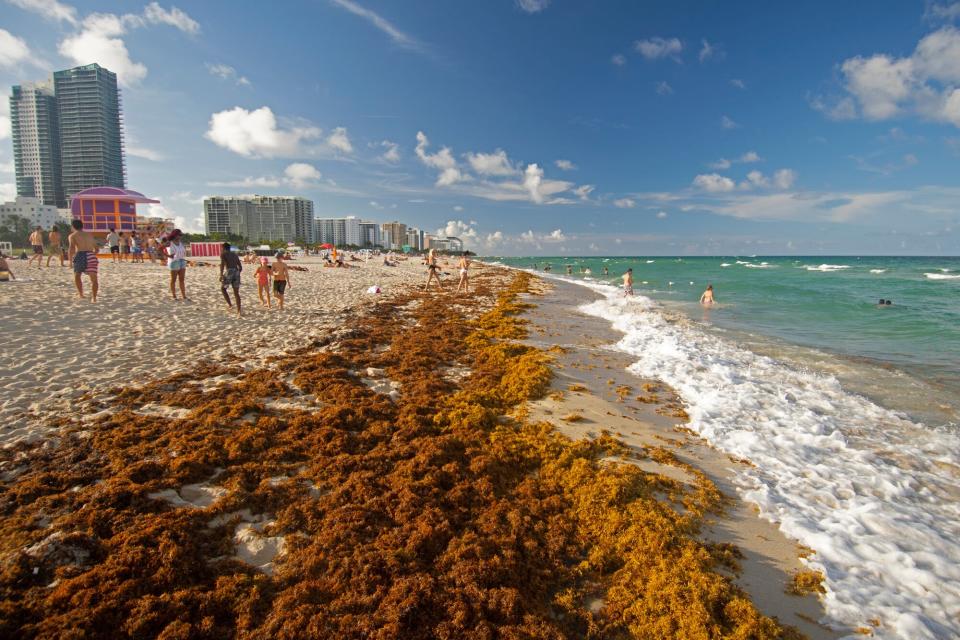A 5,000-Mile-Wide Blob of Seaweed Is Headed for Florida, Threatening Tourism Across the Caribbean

A massive belt of seaweed is making its way toward the Florida and Caribbean coasts, posing a potentially catastrophic hit to the areas' tourism.
While the sargassum seaweed spread isn't a new phenomenon, this year, the mass of seaweed seems poised to break records as it stretches over 5,000 miles from the coast of Africa to the Gulf of Mexico, CNN reported.
"These blooms are getting bigger and bigger and this year looks like it's going to be the biggest year yet on record," Florida research professor Brian Lapointe told the New York Times.
Lapointe said that it's "quite early to see this much, so soon," adding that "it just doesn't bode well for a clean beach summer in 2023."
He also told CNN that the seaweed mass formed earlier than usual this year, and "was larger in January than it has ever been since this new region of sargassum growth began in 2011."

Julia Weeks/AP Photo
Never miss a story — sign up for PEOPLE's free daily newsletter to stay up-to-date on the best of what PEOPLE has to offer, from juicy celebrity news to compelling human interest stories.
"This is an entirely new oceanographic phenomenon that is creating such a problem — really a catastrophic problem — for tourism in the Caribbean region where it piles up on beaches up to 5 or 6 feet deep," Lapointe told the outlet.
As the blob makes its way westward from the African coast, parts of the extensive mass have already begun to hit beaches in Mexico. In February, seaweed levels were marked as "excessive" along the coast south of Cancún, according to a Mexican organization that tracks sargassum levels in the region.
In Barbados, 1,600 dump trucks have been used daily to rid the beaches of the seaweed and "make it suitable for tourists," Lapointe told CNN.

Andre Seale/VW PICS/Universal Images Group via Getty
As of March 13, the stretch of Caribbean islands between Barbados and Anguilla — including St. Lucia and the two islands of Antigua and Barbuda — were marked as high risk in terms of their coastal exposure to the seaweed, according to a Sargassum Inundation Report from the National Oceanic and Atmospheric Administration.
As the mass of sargassum migrates westward, Lapointe told CNN it is expected to hit Florida beaches the hardest in July. The Caribbean and Gulf of Mexico will likely see the seaweed mass earlier.
The Florida Department of Health noted in a press release that the "seaweed itself cannot harm your health," despite concerns of harmful side effects of the buildup along coasts.
Small sea creatures and organisms that live in the seaweed, though, can cause rashes, blisters and irritation, if touched.
The Florida Department of Health added that as seaweed rots along the beach, it releases hydrogen sulfide, which produces a rotten egg-like odor. While it can irritate the eyes, nose and throat, hydrogen sulfide is not cancerous, nor is it "expected to harm health" in an open-air region like the coast, the organization said.
To mitigate exposure to the seaweed, the organization recommends avoiding touching or swimming near it and using gloves to handle the seaweed. Nearby residents should also close their windows and doors.

 Yahoo Finance
Yahoo Finance 